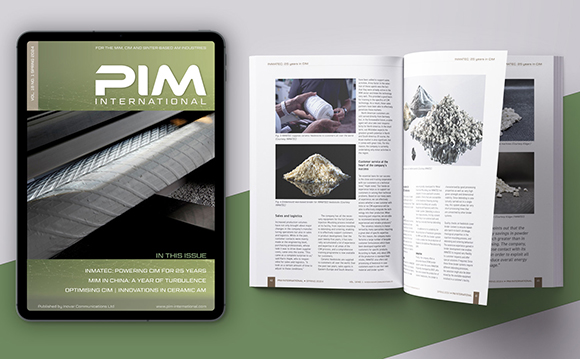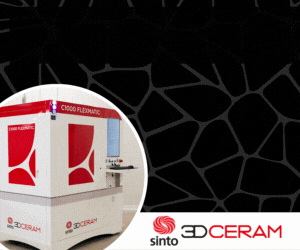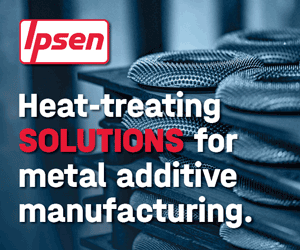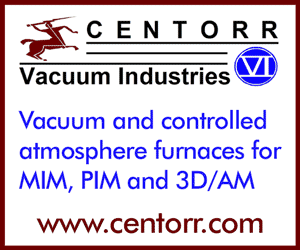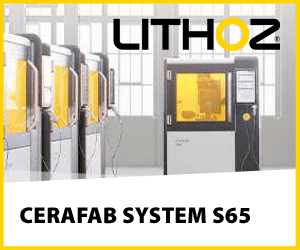PIM International, Vol. 2 No. 4 December 2008
Print copies of this issue are however still available to purchase for £35.00 including free shipping worldwide.
To order a print copy please email [email protected]
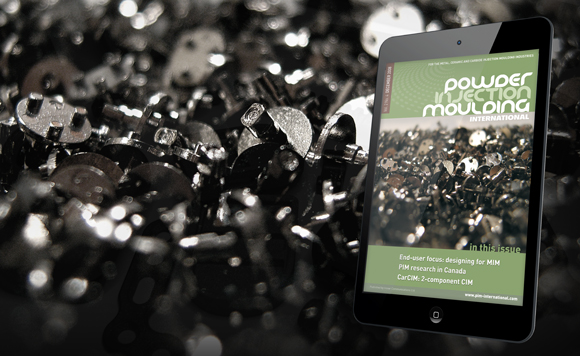
In this issue
In addition to 15+ pages of news from the metal and ceramic injection moulding industry, the 64 page December 2008 issue of Powder Injection Moulding International (Vol.2 No.4) includes the following articles and special features:
Designing for metal injection moulding: a guide for designers and end-users
Professor Randall German outlines some effective guidelines that end-users need to consider when looking to use the metal injection moulding (MIM) route for the production of high performance components. As this feature clearly demonstrates, the greater the understanding of the MIM process that a designer has, the greater the chances of successful adoption of MIM technology.
EPMA awards highlight diversity of powder injection moulding in Europe
The European Powder Metallurgy Association’s (EPMA) annual Awards for Excellence ceremony took place in Mannheim, Germany, on September 29th 2008. The two MIM components entered into the competition highlight the diversity of Europe’s PIM industry. We take a closer look at innovative high volume micro-MIM gears from Switzerland, and a contrasting low volume luxury clock casing for the automotive industry from Germany.
Euro PM2008: workshop focuses on quality of MIM products
MIM workshops have become an established feature of the EuroPM conference series. “MIM and Quality” was selected as the theme for this year’s session, with four papers looking at a broad range of issues, from distortion and dimensional control to carbon content and surface quality. Dr. Georg Schlieper reports for PIM International.
Euro PM2008: microMIM and ceramic-steel composites become a reality
The leading event in this year’s European PIM calendar was the European Powder Metallurgy Association’s Euro PM2008 Conference and Exhibition, held in Mannheim, Germany, from 29th September to 1st October. Dr. Georg Schlieper reports for Powder Injection Moulding International on PIM related highlights.
Two-component CIM parts for the automotive and railway sectors
Dr Tassilo Moritz at the Fraunhofer Institute for Ceramic Technologies and Systems (IKTS) in Dresden, Germany, reports on the outcome of the first two years of the 3-year multi-partner ‘CarCIM’ ceramic injection moulding research project funded by the European Commission within the 6th Framework Programme.
Powder injection moulding at Canada’s National Research Council
The National Research Council is Canada’s leading industrial R&D organisation and its Industrial Materials Institute, based in Boucherville, Québec, is a key centre in the ongoing development of powder injection moulding technology. PIM International reports on the evolvement of PIM at NRC-IMI and current areas of activity.
PM2008 World Congress: new target applications for powder injection moulding
In part three of our review of PIM at the PM2008 World Congress, Washington DC, Dr David Whittaker reports on how the latest technical innovations are opening the door to new markets for metal and ceramic injection moulding.
Quantitative study of powder binder separation of feedstocks
Martin Jenni, Lukas Schimmer, Rudolf Zauner, Juergen Stampfl and Jeff Morris
The rheological properties of feedstocks and their flowability and tendency for powder binder separation have a strong influence on the successful manufacturing of PIM components. A systematic comparison of the filling behaviour of different tungsten and aluminium feedstocks has been carried out experimentally. Using specially designed moulds, designed experiments (DOE) with variations in the nozzle temperature, mould temperature an injection speed of feedstocks with extremely different physical and thermal properties (tungsten and aluminium) were carried out.
Influence of carbon content on microstructure and tensile properties of the 17-4 PH stainless steel produced by MIM
P. V. Muterlle, M. Zendron, M. Perina, R. Bardini, A. Molinari
The effect of the carbon content on microstructure and tensile properties of a MIM 17-4PH stainless steels has been investigated. Carbon content influences the formation of delta ferrite at high temperature, which increases sintered density. However, delta ferrite causes a decrease of tensile strength, without a corresponding increase in ductility. In the presence of large amounts of delta ferrite, ductility decreases significantly.
Accuracy evaluation of ultra-compact gears manufactured by the microMIM process
Kazuaki Nishiyabu, Ian Andrews and Shigeo Tanaka
The production of micro-size and micro-structured parts by metal powder injection moulding (MIM) process require more sophisticated techniques than conventional MIM. New techniques for the quality evaluation of those tiny parts are also necessary to be developed. A micro-planetary gear made of 17-4PH stainless steel has been developed by micro metal powder injection moulding (μ-MIM) process. This study describes the method of fabrication and quality evaluation of the ultra-compact planet gears (module: m=0.07, number of teeth: z=24) manufactured by μ-MIM.
Browse our PDF archive by year
The following years of Powder Injection Moulding International magazine are available to download in PDF format, free of charge, from our archive.




